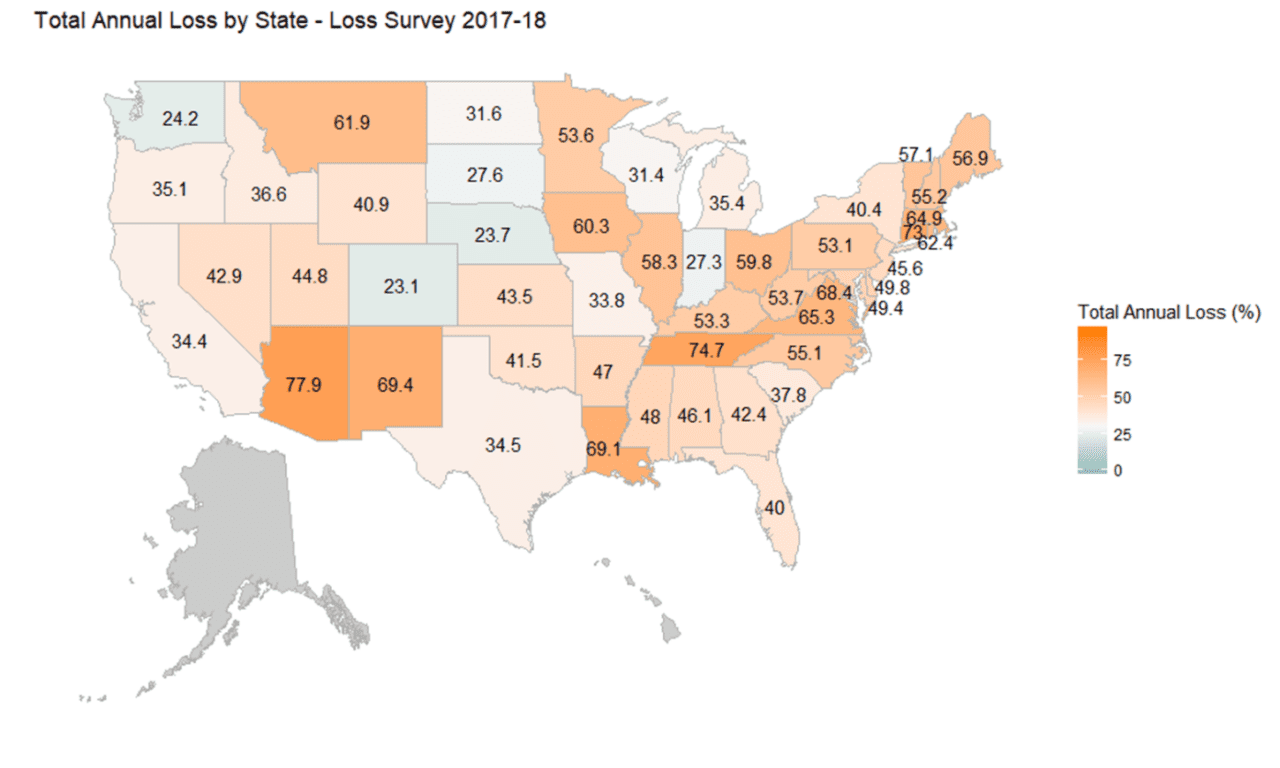Preliminary Results of the 2019-2020 National Honey Bee Colony Loss Survey
This week marks National Pollinator Week, a time when we celebrate all the diverse animals out there that contribute to pollination. The western honey bee, the species used across the country to support food production, to provide a natural sweetener, and to quite simply contribute to our leisure and free time, is among the most […]





